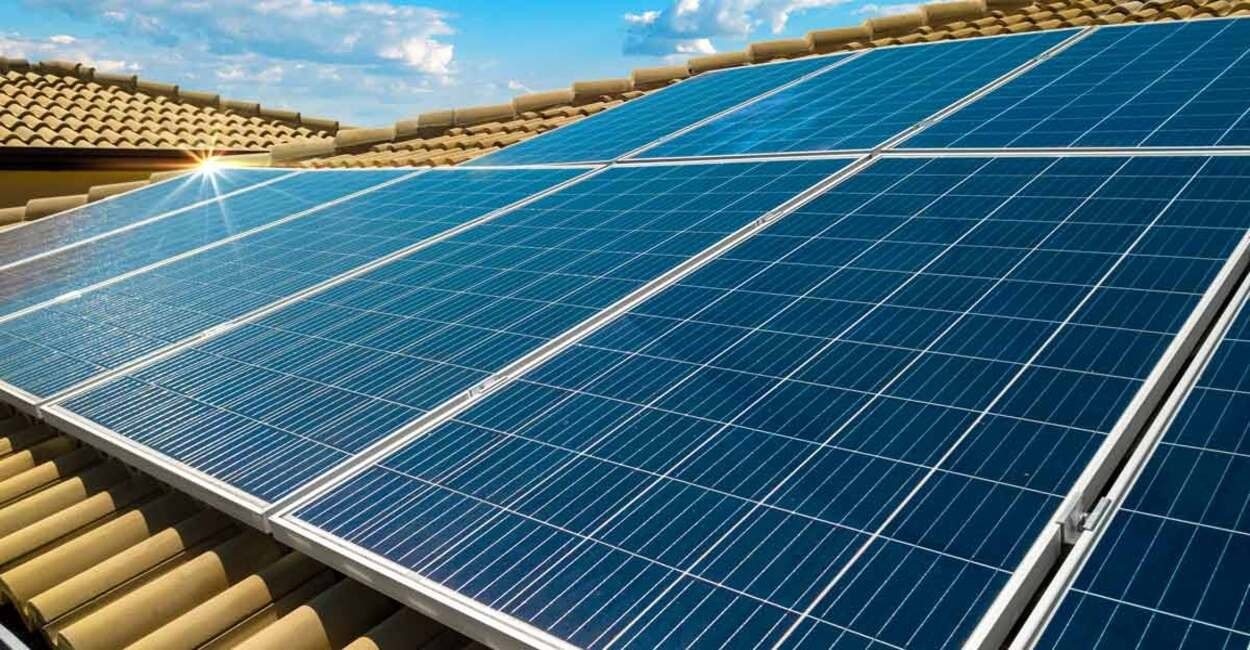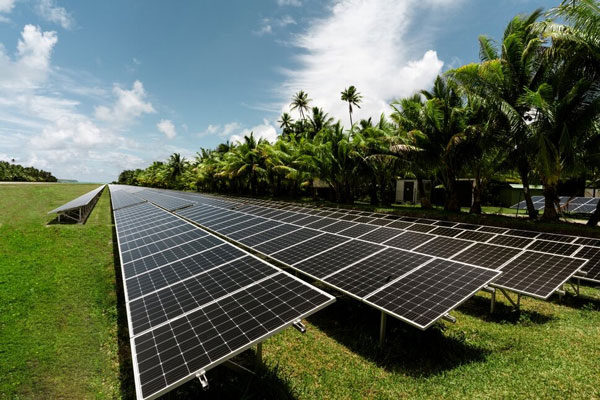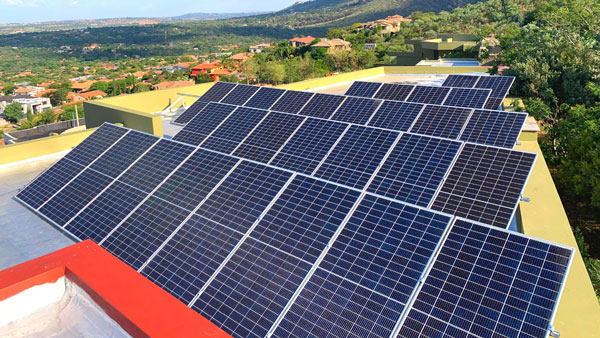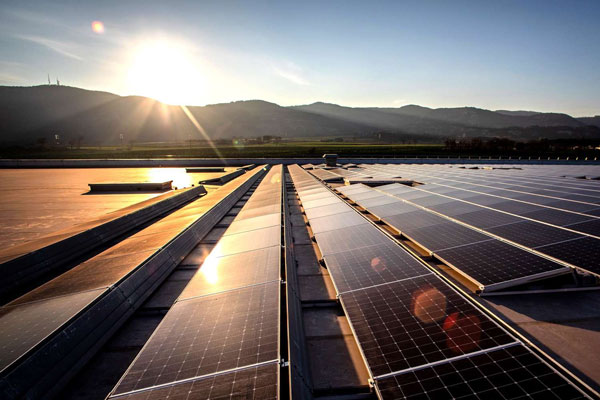Efficiency Ratings And Performance
The value of efficiency ratings in evaluating the performance of solar panels is evident in that high-efficiency panels turn more sunshine into electricity so that more will be delivered over time. In typical installations, the average efficiency of a panel ranges between 15-18%, while in premium panels, it can be as high as 22%. This factor might be especially important when applied in smaller terraces, which can hold only a limited number of panels. Ideally, a greater number of panels will allow for more efficient energy generation per square foot.
The Conditions for Actual Efficiency
There is a direct corollary between the climate and the work of solar panels. The experience of dozens of current installations reveals that solar panels in San Francisco will be noticeably more efficient than in Arizona, even though the sun exposure factor may be similar. It happens because of the effect of cooling provided. In cooler places, such as the San Francisco Bay area, the photovoltaic process, which lays at the heart of panel work, becomes more effective due to a lower temperature. The rest of the deserts, where sun exposure is maximum, will raise the average sum of energy delivered by panels. The work of the solar panel can be reduced by 10-25% due to the excessive heat. While a panel in San Francisco will work at just flow above 18 % efficiency, the real-world experience shows the worst that can be in Arizona – about 15 % annually.
Why We Know Panels Will Perform So
Solar panels are designed to work for years. While the manufacturers guarantee their work on the level of 80 % while being 25 years old, the real efficiency decline of the newest models tends to be lower. On average, The results display concentration around 0.5% annually, a 20 % efficient panel will be running on 19.5% after 5 years, considering no physical impacts or other side factors. However, the performance difference can be seen in the effect of maintenance. A study on the difference between suburban solar panels, has shown that the difference in efficiency between the panels swiped twice a year and annually was three links, or 3 %. Why, usually Solar farms do maintain perfect efficiency is the cost. The high efficiency of the farm implementation might culmine to $.32 per panel (as in the given case on large-scale farms), or precisely $64,000 in the total frame, which will never be covered by the benefits of added 3 efficiency points.
A Case in Point for a Big Scenario
We can take an example of a Nevada large solar farm implementation, where 20 % efficient farms are implemented. As the experience of the desert shows, the amount of dust covering these panels, $1000 and hotter pipes , pushes drastically efficiency down by 5-10%. Suboptimal engineering methods can deprive the panels of up to 25% of their potential efficiency access. The desert environment in relationships as low clouds also induces heat windows caused by prolonged direct sun exposure. The total 0.5% annual decline is precise lie for well-maintained and cooled desert panels. In order to guarantee the optimum performance nothing short of more than $10.3k can be devoted to the installation and maintenance of an automated cleaning system for twenty years. Other improvements will be simply not expensive to be justified by TCO costs over the course of a few decades – for instance, 0.3% annual rejection.

Durability And Material Build
One of the key indicators of the quality of a solar panel is its durability. It has to withstand test of time and numerous environment stress factors such as UV light, wind, rain, temperature, etc. The type of materials that a panel is made of determine it in many ways, and warrant its longevity.
Types of Solar Materials
Solar panels are mostly made of silicon cells, covered with tempered glass and with the back of each panel covered with polymers. The glass over the silicon is there for protection of the cells, but is also constructed to be as transmissive as possible to help with solar flow. The backsheet is polymer-based, and the same is true for the lowest layer. Material used to make equipment is in the majority of cases is of high transmissive rate, covered by a highly transmissive material. A great difference in their durability caused by the quality of two aforementioned components: glass and the silicon cells. Monocrystalline silicon is of higher quality than polycrystalline, but less used as it is more expensive and there is not a significant increase in efficiency. Glass is usually extremely strong, as it has to be when one considers how much impact it will take during extreme weather. This is also true for materials that silicon cells are made of. Monocrystalline cells last up to 45 years, polycrystalline and thin-film a bit less.
Stress Tests and Quality
Reputable manufacturers conduct a number of stress tests that replicate natural environmental conditions and exposures over the decades. One of the most important is the thermal cycling test, in which temperature is alternated from hot to cold, from -40°C to 85°C, for example, to determine how long materials will last before their bonds will begin to deteriorate. The record for how many such cycles a panel has to endure until degradation began occurred at the repeated exposure of the panels to damp heat cycle density of which at 85-85 instance corresponds to 4500 hours. Other tests include damp heat, humidity freeze, and more.
Real Life Case
The case is of a coastal installation in Florida, where solar panels are used. Salt mist corrodes different metal parts, and there is a special panel metallic frame and junction box coating in order to help with this. The panels and junctions are sprayed and after 5 years of work, the rate of their annual degradation was increased only by 0.1% in comparison to the far inland degradation rates.
More on Technology
The newest tech that is used in solar panels includes new types of panel frames and backsheets, now composed of composite materials, which are far more durable and save weight. New materials were implemented to construct the panels and they were placed in new technology. The backsheet and the frame are also composed of composites, which give them their hardness and low weight. The technology is also in the materials used for the direct cell and backsheet making. They are now made in such a way that they are now “PID”- resistant, which could potentially decrease panel drain in future.
Manufacturer Warranties
Solar equipment warranties are the most direct indicator of how much confidence a manufacturer places in its product. While the products themselves are of good quality, warranties help to ensure that the money spent purchasing the technology is secure in the long-term. While the warranties included with these products are typically thought of as covering issues with loose wiring and product flaws, they are increasingly being used to guarantee performance.
Types of Warranties Typically Offered
A solar panel will typically have two types of warranties provided with them that guarantee a discrepancy with their supposed purpose. A solar panel product warranty will typically cover defects due to materials or workmanship, lasting between 10 to 12 years in duration. The performance warranty guarantees that the solar panels will produce a percentage of their output as agreed based on their rating within a time period, most commonly 25 years, and guarantee remaining at 80% of its original output at a certain lower bound. The manufacturer of the most common solar panels used in this country provides a 25-year performance warranty, guaranteeing 87% of its original power output.
Warranty Claims Process
The author had an opportunity to see a lifetime assessment for a commercial solar array in east Texas that started to experience struggling wattage in several panels during the first five years. The analysis determined that the issue derived from a bad batch of bypass diodes. The manufacturer replaced the panel systems, paid for the labor, and discovered, throughout the panel performance readings submitted, that the wattage was lower than anticipated. These types of warranty submission processes for solar panels often involve submitting warranty claims information through the product provider’s web portal and scheduling a certified technician to the location for in-person inspection analyzing the previous 12 months of market data. Product warranties will typically specify degradation rates of output of less than 0.5% per year past the initial year of installation.
Changes in Warranty Terms
Our product warranties for solar panels are increasing in length and now extend up to 20 years. There is also an increasing amount of materials, such as exposure to salt and pollution, that is covered by warranties. Manufacturers will also take care of recycling costs at the end of life on their warranty coverage. The better terms included in warranties for solar technology further underscore the confidence in the final sick end project that is increasing year by year within the technology.
Certification Standards
Standards certification is critical for providing quality assurance, reliability, and safety of solar panels. These are certificates from recognized industry bodies that place standards on the design, the fabrication of the product, and the performance.
Key Industry Certifications
The key solar panel industry certifications include IEC 61215 and IEC 61730. The IEC 61215 pertains to the design of the solar panel and its qualification for various environmental conditions. This is an international standard. IEC 153 covers the various classes used to determine the safety of the panel against electric shock, fire, mechanical impact, and environmental stress. The latter is paramount in protecting the user.
Explained Certification Process
During the certification process, testing of the solar panel is conducted by recognized and accredited laboratories. The laboratories apply the data gathered in the environmental testing to determine the capability of the solar panel in surviving the adverse condition through simulation. The simulation determines whether the product can withstand decades of stress from the environment. The solar panels are subjected to frequent temperature variation, mechanical loads, such as weights simulating snow and wind effects, and humidity cycle. The certification is only granted if the testing shows that the panel meets the desired standards. The implication is that the product either achieves or performs above the high expectation performance.
Impact of the Certifications on Market Trust
Certifications are particularly important in ensuring market relevance and preference. According to a survey, exactly 70% are eager to purchase a project from both residential and commercial contexts if the solar panels are certified, unlike the non-certified options. The reason for this resolution is that the certified solar panels are associated with minimal failure and warranty issues in comparison to the non-certified alternatives.
Innovations in Certification Standards
With innovation and technology advancements, new standards are emerging. The latter include the IEC 63126 which is a new testing methodology for bifacial modules. These modules can generate electricity by capturing the sun from both sides of the module. The standards ensure developed and emerging technologies are tested just like other panels to meet the many industry’s geometry’s performance requirements.

Customer Reviews and Feedback
Both customer reviews and feedback are crucial for measuring the real-world performance and reliability of solar panels. They allowed observing the appliance the way it is, and from the perspective of characteristics that are important to the customers. From the one side, feedback and reviews allow going beyond laboratory data to show the solar panels to the people. From the other side, they sample customer taste and preferences, so manufacturers can better understand and cater to them. Feedback analysis is now quantified through certain patterns, yet the very nature of these patterns as tools of first instance has not been altered.
Quantifying Feedback Through Patterns
As reports, a review analysis of approximately 10k+ entries revealed that 85% of the customers felt “reliability” and “efficiency” were the strongest features of the solar panel brand. The remaining 15 % felt really “suspicious” about “installing issues” and “customer service.” This allowed the manufacturers to address the most troubling areas with utmost precision.
Although, it mostly focused on upvotes, and their percentage among the population of reviews, the customer’s preference can be quantified still more. As another report states, a homeowner in California predominantly sourced the solar panel based on “customer issues in terms of longevity” coupled with “positive customer reviews of the service received from the company.” The manufacturer solved an important manufacturing issue, “by making the mounting of the solar panels itself less complex”.
Advertising Strategy
In addition to these quantified examples, according to another report, the majority of solar companies “lean heavily on their customer testimonials, preferring to weave a narrative wherein satisfaction by both customer and field technician is shown as intrinsic part of the product experience.” They present actual customers, tell their stories and provide audience with percentages, too. For instance “98% customer satisfaction rating!” or “500+ users vote this product best in class!” As a result, advertisement claims aside, there is a definite increase in customers.





